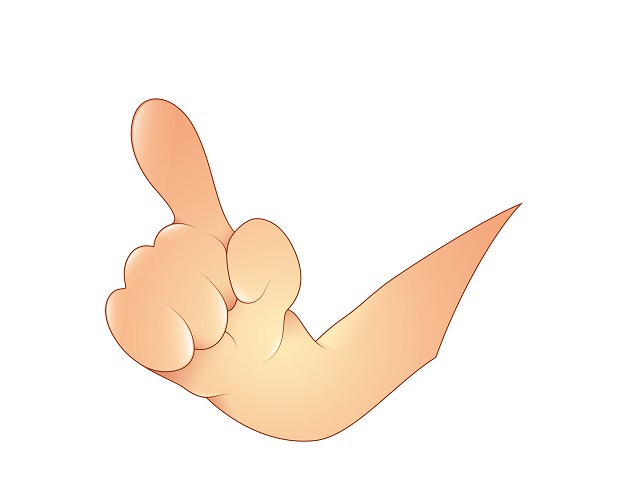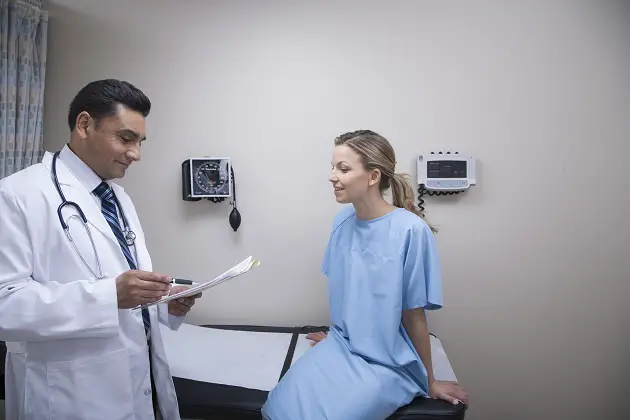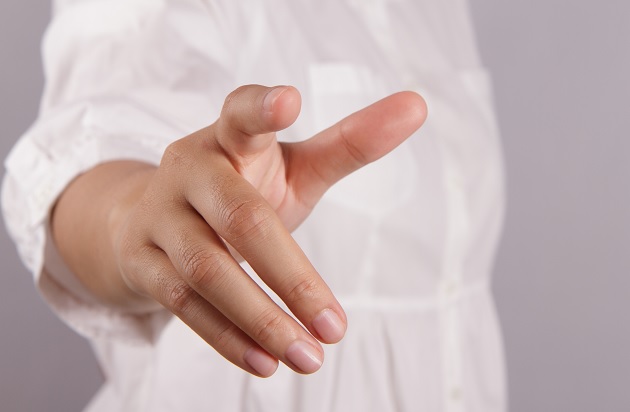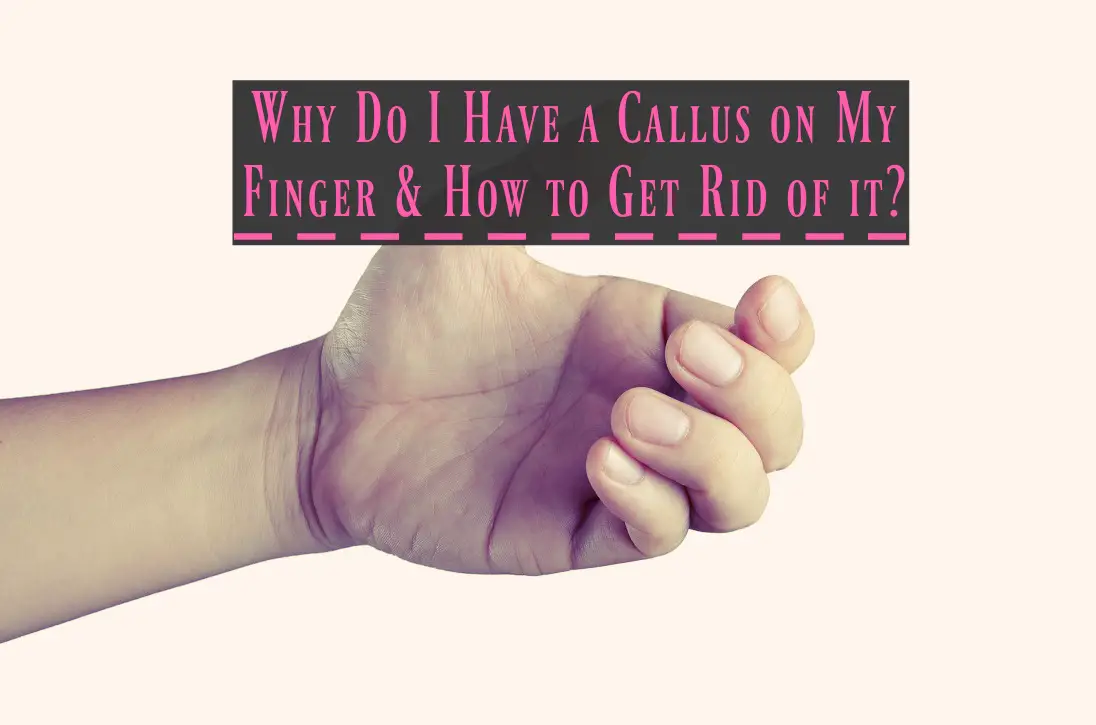If you have a callus on an exposed area of your skin, such as your hand or finger, it can be uncomfortable and embarrassing.
Fortunately, it’s not really that difficult to get rid of calluses.
Calluses are actually hardened, thick layers of skin you can develop when your body is trying to protect your skin from excessive pressure and friction.
They occur most frequently on feet, hands, toes and fingers. Harvard Medical notes that a problem is known medically as hyperkeratosis.(1)
The following gives you a few ideas about how to deal with calluses if they form on your fingers.
What causes a callus on my finger?

It is important to note at this point that a callus on your finger is not usually a major health issue if you’re otherwise fairly healthy.
You will generally only need treatment if calluses are causing you discomfort or if you are suffering from a medical condition that might make them dangerous if they remain.
And for most of us, eliminating the cause of the pressure or friction can make a callus simply disappear over time.
However, there are circumstances in which you will want to deal with calluses immediately whether they are causing you discomfort or not.
Ohio State University points out those who have a condition like diabetes that results in poor blood flow to the skin, there is a much higher risk associated with the presence of calluses on the skin.(2)
But in these cases,
it is always best to get a doctor’s opinion about how to care for your callus and how to remove it – assuming that your doctor decides you should.
The NIH notes that the primary cause of calluses is repetitive friction and pressure.(3)
This movement and contact is what causes them to grow and develop on your skin.
In feet, this is almost always the result of poorly fitting shoes that either compress certain areas of your foot or that are so loose that they allow your foot from rub against the side of the shoe or its seams or stitches.
Not wearing socks with your shoes could also cause this problem!
But with your hands and fingers, it’s generally a bit different.
While friction and pressure are still usually responsible for the development of a callus on the finger, it is rarely because you are wearing gloves all the time – with the gloves are rubbing against your skin.
More often, it is because you are frequently carrying out some action with your hand, such as writing with a pen or pencil, operating a power tool or playing a musical instrument.
But unlike carpal tunnel syndrome, it is not the repetition itself that causes the problem though, but the resulting friction.
Identifying a Callus

If you think you might have a callus on your finger, you can identify it as such by using the following indicators:
- It is a rough, thick patch of skin
- It is a raised, hardened bump
- You have pain or tenderness near this spot
- The skin is waxy or dry and flaky
Calluses vs corns
Calluses and corns are not exactly the same, and so will be treated somewhat differently.
Calluses are larger than corns, which are usually inflamed and have a hard center. Moreover, corns do not appear on fingers and are usually confined to those areas of your feet that do not bear weight, such as your toes or between your toes.
By contrast, calluses are almost never painful, regardless of where they develop – including on your fingers.
Usually, calluses can vary a great deal in shape and size, but they are most often going to be much larger than a corn.
Preventing Finger Calluses
Just as you should be careful about the shoes and socks you wear when it comes to developing calluses on your feet, protecting your fingers and hands from calluses also requires thinking about what covers them as well.
This is why you might want to wear padded gloves whenever you are using hand tools or heavy power tools on a regular basis.
The same is true if you ski or play sports like baseball, golf or tennis.
A good pair of gloves that are well made and that fits you properly can help protect your hands and fingers from excess friction so you won’t develop calluses.
Treatment at Home

The treatment of calluses usually revolves around you avoiding any repetitive actions that might have caused them to develop in the first place.
Protecting your hands and fingers by wearing gloves – as mentioned above – is certainly a step in the right direction. Of course, if these are ill fitting gloves that are too tight or too loose or that are padded insufficiently, they can actually make the situation worse.
Take your time when choosing the gloves you are going to use.
If you already have a callus, another approach would be to use the hand that has a callus less often by switching to your other hand whenever possible.
For instance, if you frequently use a hand saw with your right hand, switch hands and use the other one – if you are ambidextrous enough to safely do this.
Covering the callus with a bandage or over-the-counter pad could work as well, although this might be difficult when you’re talking about a finger.
The US Department of Health suggests that you should not use over-the-counter corn removal pads or liquid corn removers for calluses without a doctor’s permission.
The salicylic acid in these can easily lead to an infection, particularly for those who have diabetes or some other medical condition that limits blood flow to certain areas.
You can also try soaking your hands in soapy, warm water.
This helps to soften calluses, making it easier to remove any thickened skin. Try reducing the thickened skin following a bath.
You could do this by rubbing the callus with a washcloth, emery board, nail file or pumice stone to help get rid of this thickened layer.
One warning though: don’t use anything sharp to trim away the skin yourself!
Also, diabetics should not use a pumice stone unless their doctor has told them to.
The University of Southern California suggests plenty of moisturizer to keep your hands as soft as possible.(4)
With a bit of patience, these steps should help you get rid of any calluses over time.
When to Talk to a Doctor
If you have a callus that seems unusually inflamed or has become extremely painful, you should see your doctor about this immediately.
Certainly, if you have or blood flow or diabetes, you should contact a physician before self-treating a callus, since even the slightest injury to your skin can lead to a major infection or an ulcer that can actually cost you your finger.
When you go to your doctor, he or she will examine your fingers and hands – and particularly the problem area you’re concerned about – to determine if there might be any other cause for thickening of your skin in that area, such as cysts or warts you may have developed.
It may be that x-rays will be recommended if there appears to be some physical abnormality behind what appears to be only a callus.
How to get rid of it?

Beyond this, if the various at-home treatments have failed to solve your problem, there are several medical treatments your doctor can try to eliminate the callus.
If your doctor deems it appropriate in your particular case, he or she can simply trim away the excess skin using a scalpel or other instrument.
As Aga Khan University notes, you definitely shouldn’t do this yourself at home since it could easily lead to an infection – particularly for those who are diabetic.(5)
There are – as mentioned above – corn and callus removing medications, but they should only be used under a doctor’s supervision, particularly if you have a medical condition like diabetes that restricts blood flow.
Your doctor may choose to cover your callus with a patch containing salicylic acid – usually it is a roughly 40% concentration.
You can get these patches without a prescription at your local drugstore, but it’s better to ask your doctor first before you do this. Your doctor can tell you how to use this patch properly and when it should be replaced with a new one.
Salicylic acid also comes in a gel form for larger areas of skin.
Your doctor may recommend that you use this instead of a patch, although this is perhaps less likely with a finger.
He or she may also suggest that you try using an emery board, nail file or pumice stone to remove the dead skin before putting on a patch or applying the gel.
Again, if you are a diabetic your doctor may be reluctant for you to do this yourself.
But if they tell you it is safe, you can give it a try.
In conclusion
Calluses are very annoying and even embarrassing, but virtually everyone gets one or more calluses eventually.
You are particularly likely to develop one if your work requires you to do something physically repetitive on a daily basis.
And for your hands and fingers, this kind of repetition can occur in any number of jobs, whether its construction, manufacturing, retail sales or even working in an office.
The advice laid out above will help you deal with a callus if you get one or more on your fingers, but keep in mind that in certain situations you’ll want to see a doctor rather than handling it yourself.
Resources
(1)https://www.health.harvard.edu/pain/corns-and-calluses
(2)https://wexnermedical.osu.edu/wound-healing/diabetic-ulcers
(3)https://medlineplus.gov/ency/article/001232.htm
(4)http://scalar.usc.edu/works/home-treatment-for-callus-removal/index
(5)https://hospitals.aku.edu/pakistan/diseases-and-conditions/Pages/corns-and-calluses.aspx
Leave Feedback: Was this article helpful?

